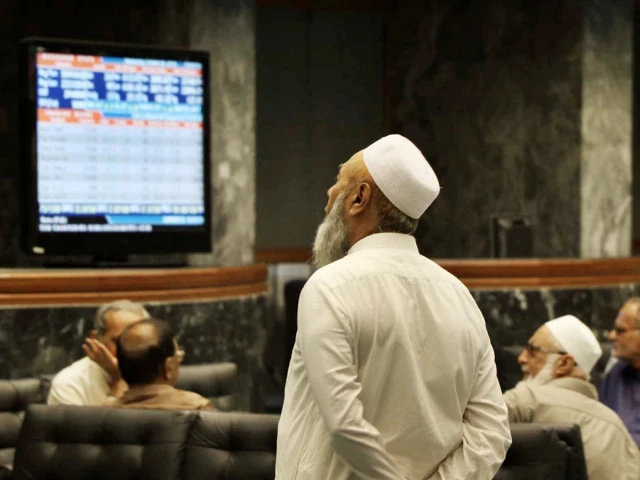Business
The electric question | The Express Tribune

PUBLISHED
September 21, 2025
KARACHI:
The afternoon sun beats down on Karachi’s Shahrah-e-Faisal as traffic locks into yet another jam. In an old sedan, a driver taps the steering wheel, eyes fixed on the blinking fuel gauge. At more than Rs. 270 a litre, every refill feels heavier than the last. A few lanes over, a plug-in hybrid electric vehicle (PHEV) glides forward almost noiselessly, its driver unbothered by the stop-and-go grind, knowing most of the ride will cost only a fraction in electricity.
This quiet contrast says a lot about where Pakistan finds itself. In cities like Karachi and Lahore, congestion is a way of life and the rising price of petrol has become a private calculation in every household. The fumes from endless traffic only add to skies already thick with smog. It is here that New Energy Vehicles (NEVs), a category that includes both plug-in hybrids (PHEVs) and fully electric cars (EVs), are being looked at as more than just cars. They promise relief for wallets as well as for the air people breathe.
Elsewhere, this shift has been years in the making. In the beginning, electric cars were more of a novelty. They were costly, clunky, and could not go very far on a single charge. It was only after battery technology improved that the shift began. By the mid-2000s, companies like Tesla in the US and BYD in China started to change perceptions.
Governments in Europe and Asia added fuel to the push by offering incentives and building charging networks. The result was a global surge. In 2024 alone, more than 17 million electric and plug-in hybrids were sold, and in places like China, Norway and Germany, electric cars now account for a significant share of the market.
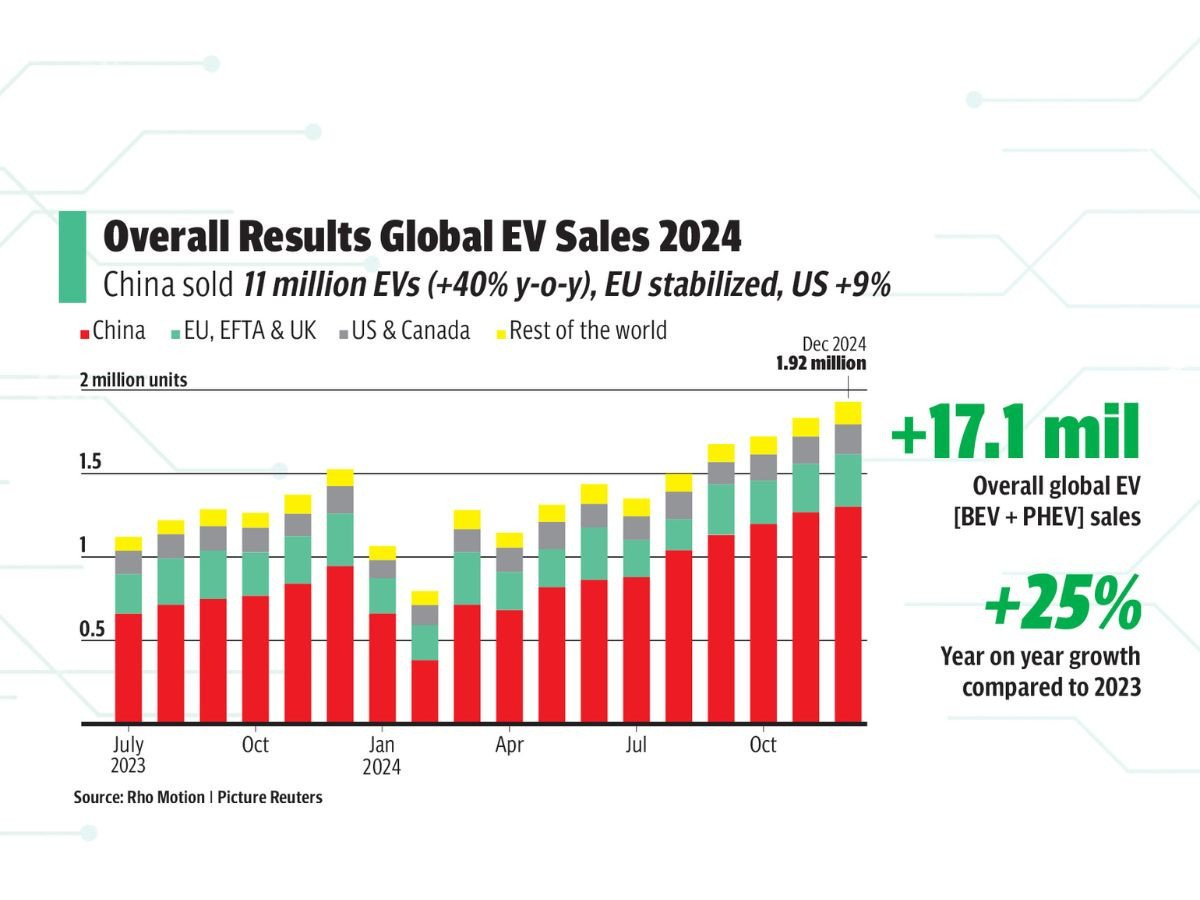
Pakistan is late to the curve. Policy papers now talk of 30 per cent of new cars being electric by 2030, yet on the streets petrol still rules. Charging stations remain rare, and EVs are mostly limited to wealthier buyers. Even so, the entry of global players and the slow trickle of PHEVs onto Pakistani roads suggest the story of the country’s auto market may be about to change.
The global promise of NEVs
Around the world, the case for New Energy Vehicles has moved well beyond symbolism. In 2024, more than 17 million EVs and PHEVs were sold globally, a 25 percent increase from the year before, with forecasts suggesting sales will surpass 20 million in 2025. China alone now sells more EVs in a single month than most countries sell in a year. Europe, too, has embraced the transition; in the first half of 2025, over half of all new car registrations carried some form of electrification. In Norway, nearly four out of every five new cars are fully electric, an achievement that once seemed unthinkable but is now routine, powered by years of incentives and consistent infrastructure investment.
Governments have discovered that NEVs are more than just a consumer upgrade; they are a tool of national strategy. Transport is one of the largest contributors to carbon emissions, and urban pollution has become a political issue in many countries. By replacing internal combustion engines with electric or hybrid powertrains, nations cut dependence on imported oil, save billions in foreign exchange, and reduce the smog that chokes their cities. For countries that import much of their energy, the appeal is obvious: cleaner air at home and greater resilience abroad.
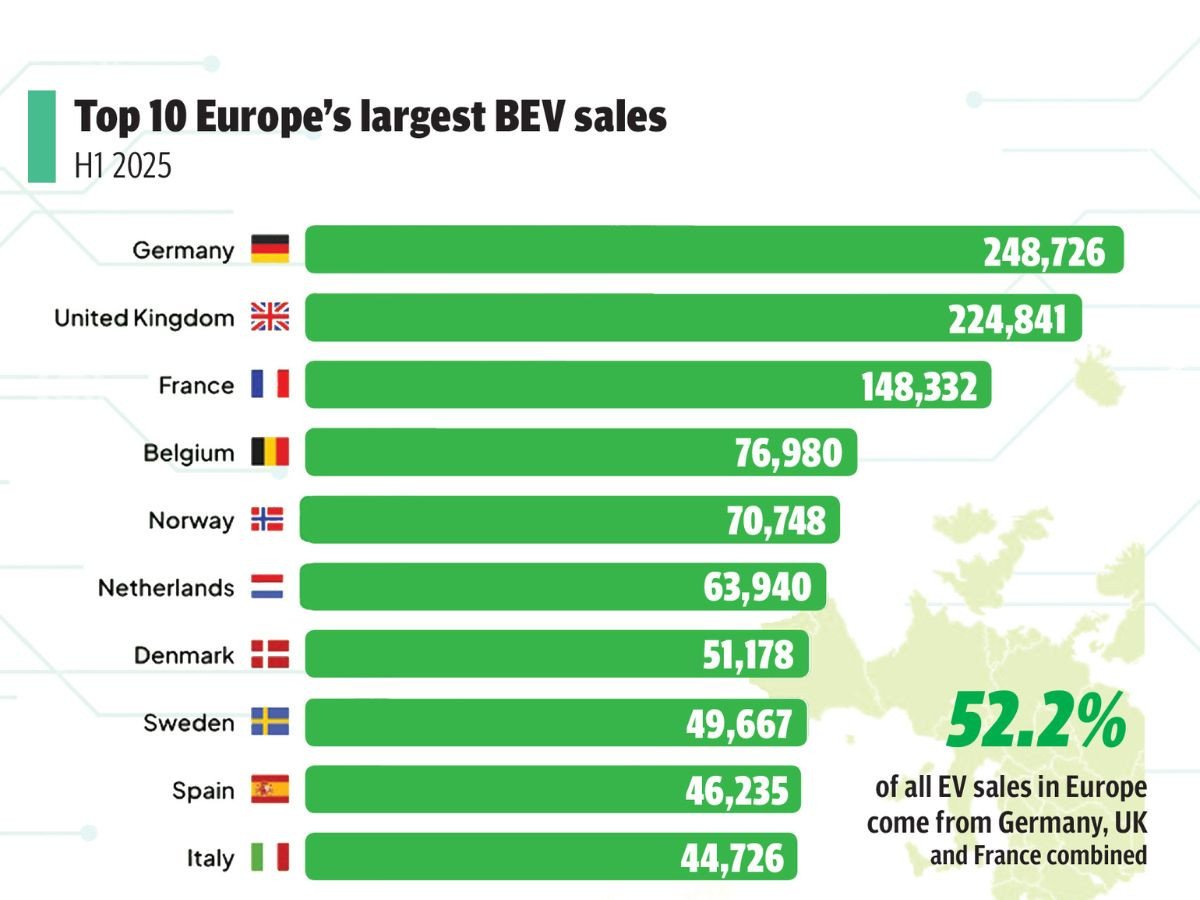
The rise of NEVs has also spurred new industrial ecosystems. Thailand, for example, has positioned itself as Southeast Asia’s EV hub by offering automakers tax breaks and duty reductions in exchange for commitments to local assembly. Indonesia has moved aggressively into the electric supply chain by promoting domestic nickel reserves for battery production. Even small markets have shown what is possible with the right approach.
These global examples show that the shift to new energy vehicles is no longer limited to rich nations. From Europe’s motorways to the crowded streets of Southeast Asia, electric mobility is spreading on the back of climate concerns and economic logic. Pakistan, by contrast, is only just beginning. Policies have been announced and a few showrooms have opened, but adoption remains slow, infrastructure is thin, and prices are still out of reach for most buyers. The success of NEVs elsewhere shows what is possible, but also underlines how far Pakistan has to travel.
On the ground, the gap between ambition and reality is hard to miss. Other countries move quickly with clear policies and expanding networks, while Pakistan is still sketching the outlines of a plan. The government has set targets, big players have entered with big promises, and early adopters are experimenting in cities such as Karachi and Lahore. But under the optimism linger real questions about charging, affordability and whether policy can keep pace with technology.
Pakistan’s NEV landscape
On paper, Pakistan has not ignored the rise of new energy vehicles. Targets have been set, committees formed, and policies announced with the promise of a greener transport future. The government has spoken of seeing thirty percent of all new vehicles as NEVs by 2030, and officials have laid out frameworks that appear designed to encourage investment. But on the roads of Karachi, Lahore, and Islamabad, progress is far less visible.

When asked about the policy environment, Danish Khaliq, the Vice President Sales and Strategy at Mega Motor Company (Private Limited), BYD’s local partner in Pakistan, acknowledged that conditions had improved compared to just a few years ago. “Two key policy frameworks exist. One is the Electric Vehicle Charging Policy, which streamlines NOCs and reduction in tariffs for charging stations. The other is the National Electric Vehicle Policy 2025-2030, which incentivizes NEV adoption. It gives subsidies on two- and three-wheelers (Up to Rs65,000 on 2 wheelers and up to PKR 400,000 on 3 wheelers.) and talks of extending this to four-wheelers in the future. Consistency and long-term implementation remain important,” he explained. In addition to this the NEV policy aims to achieve 3,000 public charging stations by 2030.
The optimism, however, is tempered by market realities. In September 2025, Pakistan’s Tariff Policy Board formally approved the commercial import of used vehicles up to five years old. According to the Federal Board of Revenue (FBR), these imports are subject to an additional 40% percent duty and the decision is still to be placed before the Economic Coordination Committee (ECC) for final authorization. While framed as a step toward broadening consumer choice, industry leaders see it very differently.
As Khaliq put it, “Practically, this favors Internal Combustion Engine (ICE) vehicles, not EVs. Importers will mostly bring in old petrol and diesel cars because they’re cheaper. That’s counterproductive, it worsens emissions, wastes limited foreign exchange, and we don’t even have mandatory emissions testing. Used EVs are rare, so the benefit is minimal for EV adoption.”
From the perspective of car reviewers and consumers, the gap between what is promised and what is delivered is even starker. Sunil Munj, co-founder of PakWheels, had a different perspective. “The truth is, despite the talk, our charging network is almost non-existent. Policies are ambitious, but the implementation is missing. Without consistent support, the market will struggle,” he said.
The contradiction is clear. On one side, policy documents speak of streamlined approvals, subsidies, and a network of charging stations that would transform the country’s mobility landscape by the end of the decade. At the same time, drivers can still count on one hand the number of working chargers in the country’s biggest cities, while dealers continue to bring in second-hand petrol cars by the shipload. For now, Pakistan’s journey with new energy vehicles sits in an uneasy middle ground, ambitious on paper, uncertain in practice, and waiting to see whether promises can turn into action.
For policymakers and automakers, the debate revolves around targets, tariffs and incentives. For ordinary drivers, the question is far simpler: will these cars make life easier, cheaper and more reliable? In cities where daily commutes stretch well past an hour and long intercity trips are routine, the real test will not be in policy documents or press conferences, but in how these vehicles fit into everyday habits and worries.
Consumer insights
For many buyers in Pakistan, the debate over new energy vehicles is not about policy frameworks or technical jargon. It is about whether these cars can realistically replace the habits formed over decades of driving petrol engines. That is why voices from within the car community carry weight, reflecting what ordinary commuters see as practical solutions.
Sunil, described PHEVs as the natural middle ground for a market like Pakistan. “I think this machine is an ideal shift from a petrol or gasoline engine towards an EV, because PHEV is right in the center. So, when you’re changing the habit of people that were used to driving gasoline cars, going 100 percent electric is a big step. PHEV gives you the long-range of petrol plus the ability to drive electric on city commutes. First step towards full electric.”
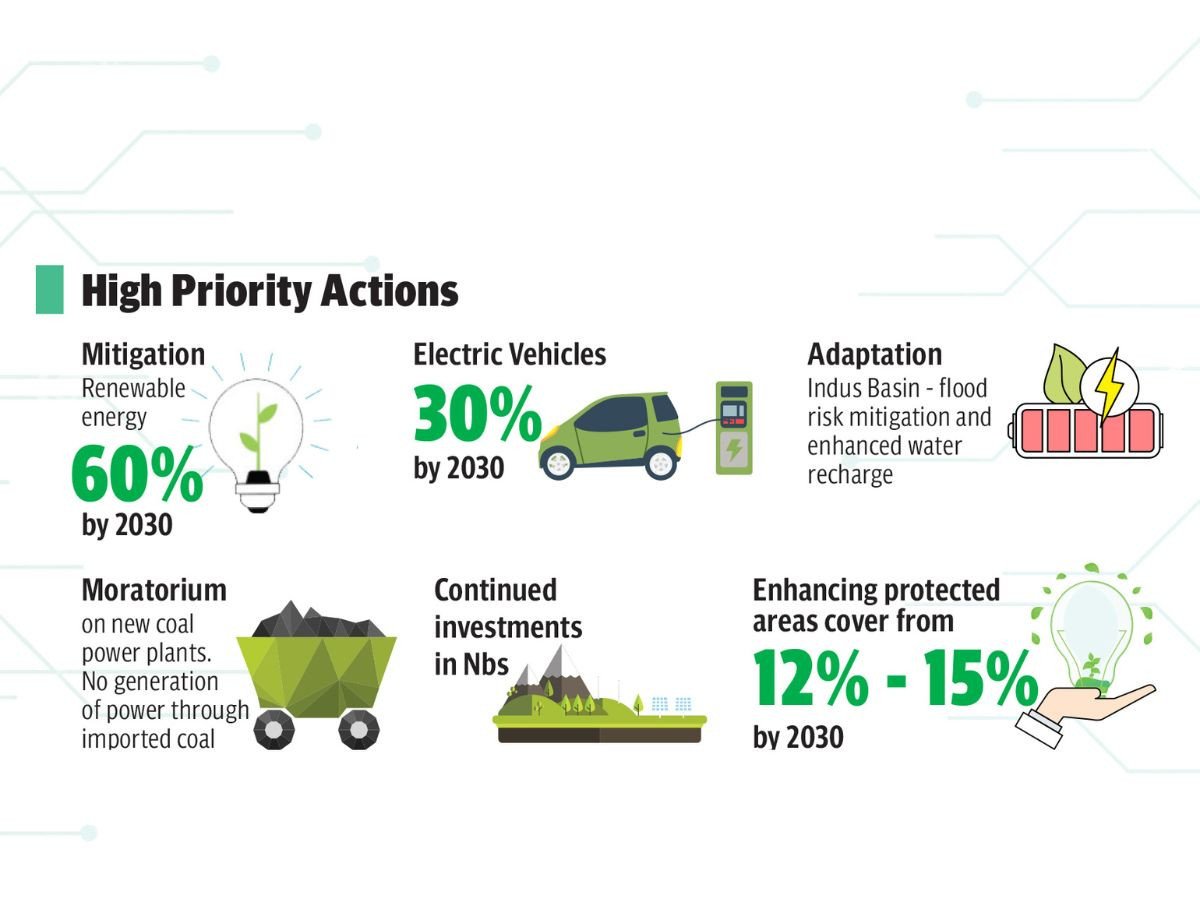
He pointed to commuting patterns as one of the strongest reasons why hybrids with electric range may fit better than pure EVs at this stage. “If I look at Karachi, a one-way, 40–50-minute drive is normal. In Lahore, inter-city drives to Faisalabad, Multan, Islamabad, even Peshawar are common. For a 100 percent EV, range anxiety is real with our weak charging network. PHEV solves that problem because you get electric range and the liberty to cover long distances on fuel.”
For Sunil, the hesitation surrounding charging is part of a natural adjustment process. He compared it to the early days of mobile phones, when users were unsure about charging habits. “Range anxiety is the biggest barrier. Just like mobile phones, when they first came, people worried about charging. Now it’s second nature. Once people get used to plugging in their car every night, PHEVs will become normal. They are the ideal step to ease consumers into new technology.”
For now, PHEVs offer a practical answer to the anxieties of daily commutes, giving drivers the reassurance of fuel with the efficiency of electricity. They point to a future where habits may gradually shift, but the direction of that shift will depend on how the industry responds. Automakers and dealers now face the challenge of matching consumer expectations with products, pricing, and infrastructure, and it is here that companies like BYD have begun to stake their claim.
Shaping the market
Pakistan’s shift toward cleaner mobility is still in its infancy, but the entry of global automakers has begun to shape how this market will look in the years ahead. Toyota, Honda, and Hyundai continue to push their conventional hybrids, while MG introduced one of the first mass-market EVs. More recently, BYD has entered with both PHEVs and EVs with launching Pakistan’s first NEV below PKR 9 million, signaling that the transition will not be limited to luxury niches.
For BYD, the decision to arrive now is tied directly to the pressures facing Pakistan. Danish Khaliq explained, “Pakistan is at a critical point. We are facing climate calamities, yet transportation is still one of the biggest consumers of imported fuel, which strains foreign exchange and harms the environment. That is why we felt the timing was right to introduce sustainable mobility. It is similar to how Pakistan skipped landline saturation and directly moved to mobile phones. We do not need to wait decades before shifting to EVs. The technology is affordable and accessible now, and we can benefit immediately.”
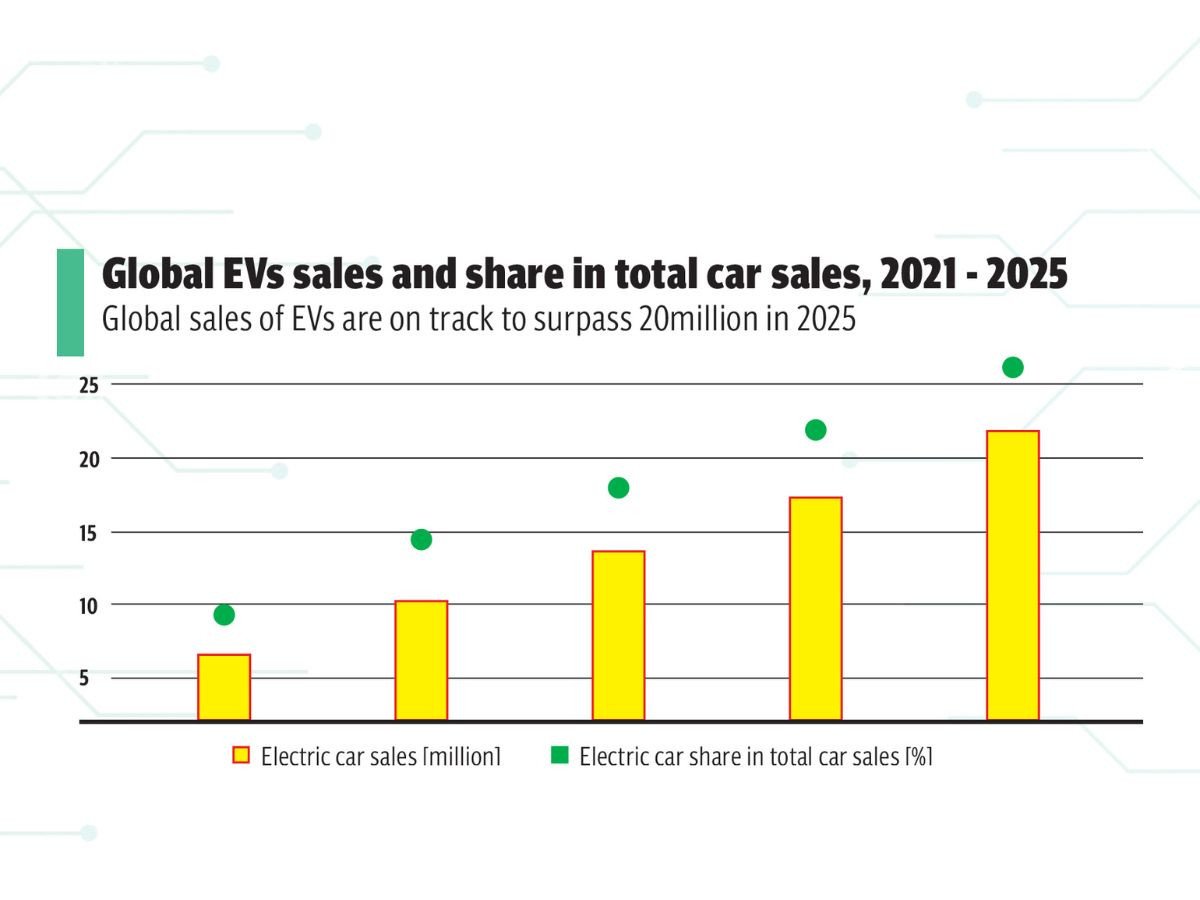
The question is how quickly these benefits can be realized. Khaliq noted that both EVs and PHEVs have measurable environmental gains. “The impact depends on adoption. EVs eliminate tailpipe emissions, and even with mixed-fuel electricity, emissions drop by around 80 percent. PHEVs can reduce them by 60 to 70 percent.
For adoption, three issues need tackling: product availability, charging infrastructure, and price parity. We are addressing these by rolling out charging stations through HUBCO Green, our sister concern, who has partnered with leading Oil Marketing Companies (OMCs)like PSO and Attock Petroleum PARCO Gunvor, and also by installing chargers in malls, offices, and towers. The government is supporting with new charging policies, which helps confidence in adoption.”
That confidence is tested by how the technologies are sequenced. Should Pakistan rely on conventional hybrids as a halfway step, or push more directly toward PHEVs and EVs? “Hybrid electric vehicles have small batteries and limited environmental benefit. PHEVs and EVs are what Pakistan needs, because they give real emission reductions and efficiency. Both can work together. EVs give the additional benefit of maximum tailpipe emission reductions while PHEVs address range anxiety until charging infrastructure expands,” Khaliq said.
He also reiterated the future readiness of the company’s technology. “BYD began as a battery company, which gives us an edge. Our Blade Battery is one of the safest in the world. It passes the nail penetration ‘Everest’ test where others explode. Beyond that, BYD invests heavily in R&D with 100,000 engineers working on EV platforms, making batteries denser, safer, and more efficient every year.”
The pitch to consumers is framed not only around technology but also everyday savings. “Buying a car is buying an asset, and Pakistani consumers are very informed. Our Ato 3 is already cheaper than many local hybrids. Driving 400 km on an EV costs around Rs. 2,500 to PKR 3,000 in electricity costs, compared to Rs. 10,000–12,000 in petrol. That is a three to four times savings on running costs.
Maintenance is also reduced to a half or one-third the cost of ICE vehicles since there is no requirement for engine oil and filters (oil).. We have set up after-sales centers across the largest cities in Pakistan, are continuously training local staff, and are building a state-of-the-art local assembly plant. Adopting EVs and PHEVs is not just about being futuristic. It is practical, economical, and necessary for Pakistan’s environment and energy security,” Khaliq said.
For industry observers, the arrival of new models such as the Shark 6 pickup truck could broaden the market further. Sunil Manch described it as a potential disruptor in a segment long dominated by a single option. “In Pakistan, the pickup market had almost no options besides the Vigo. The Shark offers power, fuel economy, and cabin comfort, especially rear seat comfort, which has always been poor in pickups here. This makes it ideal for Pakistani families. But the real buyer will depend on the price. If the price is right, it will disrupt the market.”
He also pointed out how safety and reassurance could expand the appeal beyond traditional buyers. “Range anxiety often discourages women drivers. With the Shark 6, the combined fuel and charge range removes that risk. Its safety features and driving comfort make it reassuring for both men and women.”
Taken together, these perspectives show how the industry is starting to respond to both opportunity and skepticism. Big names still rule Pakistan’s roads, but newer players are starting to test old assumptions about cost, performance and safety. The real measure, though, will come once these cars leave the polished floors of showrooms and settle into the routines of daily life. It is in the experiences of actual users that the promises of technology will be weighed against the realities of the road.
Life behind the wheel
Policy debates and corporate strategies tell one side of the story. The other unfolds quietly on city streets, in homes where drivers are learning what it actually means to own and maintain a PHEV or EV in Pakistan.
Ali Raza, 38, from Lahore, said his decision came after months of watching petrol prices eat into his income. Filling the tank of his old car felt like handing over half his salary each time. The numbers pushed him toward a EV, a choice he felt was both lighter on the wallet and more in step with where the world is heading.
For Raza, the vehicle is not a luxury toy but a family workhorse. “This is not my secondary car. It is the one I use every day, whether it is for dropping my kids to school, going to the office, but visiting relatives in another city, that’s still my fear. Initially people thought I would keep it as a backup, but it has now replaced my main car.”
The shift has already shown up in his household budget. “On fuel alone I save close to 30,000 rupees a month. Maintenance is another relief because there is no engine oil or filters to worry about. If I compare it with my old petrol car, the running cost is almost one-third. For the first time in years, I feel like a car is not draining my wallet.”
Yet the transition has not erased all worries. Raza admitted that resale value and after-sales service still weigh on his mind. “My biggest concern is what happens after three or four years. Will people be willing to buy it second-hand. Will parts and service be as easily available as they are for Toyota or Honda. Charging is less of an issue for me because I installed one at home, but I still wonder what will happen on a long trip outside Lahore.”
Khaliq informed that to meet long-term adoption targets, they have chosen to challenge the perception that electric means expensive. “Earlier entrants introduced luxury EVs, creating a perception that electric means expensive. We challenged that with the Ato3 at Rs. 9 million, which is even competitively priced than some of the locally assembled hybrids. We also invested in charging infrastructure ourselves and set up our own experience centers and after-sales service to give customers confidence. Our strategy is simple: competitive pricing, infrastructure development, strong after-sales, and continuous consumer education,” Khaliq explained.
The question of local capacity inevitably follows. Batteries account for a large share of an EV’s value, and whether Pakistan can one day produce them domestically remains uncertain. “Batteries make up 35 to 40 percent of an EV’s value. Initially, we will import them, as Pakistan does not yet have the scale or technology to manufacture. Once local assembly grows and applications like energy storage expand, battery assembly and later manufacturing could follow. But the first step is setting up EV assembly plants, which we are already working on,” Khaliq said.
The experiences of early adopters point to the questions that remain unanswered. What happens when thousands more make the switch. Can the infrastructure keep pace. And will the market evolve fast enough to support them.
Roadblocks on the journey
Every new technology carries its own hurdles, and Pakistan’s early encounter with NEVs is no different. For all the optimism about cleaner transport, the realities of infrastructure, affordability, and market confidence continue to weigh heavily.
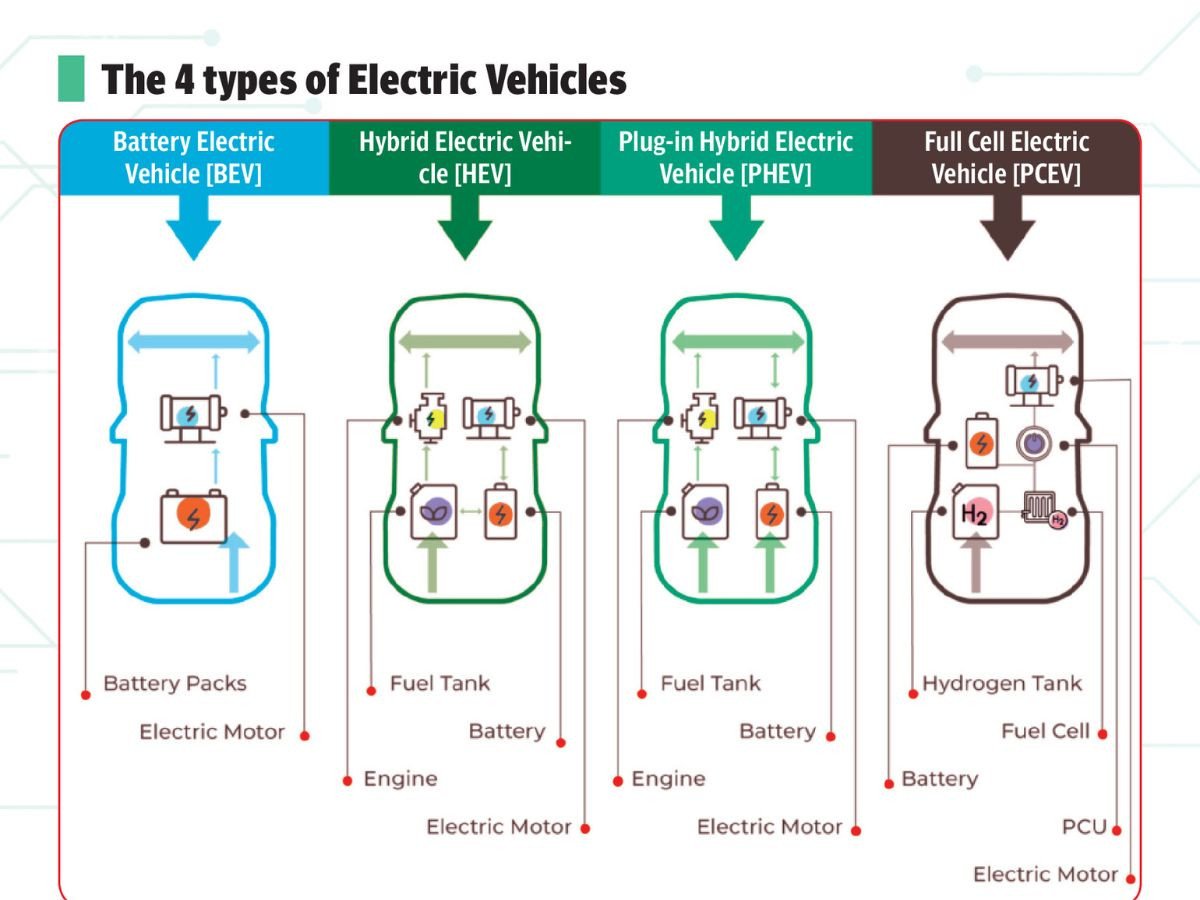
For industry observers like Sunil, the most immediate concern remains charging. “Our charging network is really in bad shape right now. Even today, you can count the number of commercial chargers in Lahore, Islamabad, and Karachi. It is such a shame. But if I see the glass half full, for the first time we have surplus electricity in the country. We just need the charging units, and BYD says they will help set those up.” His words echo what many potential buyers fear most: the anxiety of not finding a reliable charging point when it is needed most.
Affordability is another obstacle. Khaliq pointed out that while wealthy early adopters may not depend on government support, broader uptake cannot happen without it. “Early adopters do not necessarily rely on subsidies, but for mass adoption, price support will be needed. Globally, there are demand-side incentives like rebates and subsidies and supply-side ones such as local assembly support through tax and duties relaxation. In Pakistan, supply-side incentives are more sustainable because they encourage local assembly and industry growth, rather than draining subsidy pools quickly.”
The frustrations are not limited to policy or infrastructure. The excitement of owning something new has not erased the day-to-day frustrations. Raza remembered how friends and family congratulated him on the savings, only for him to discover the limits of the system the first time he looked for a fast charger on the motorway. The network, he said, is patchy at best, and moments like that remind him how early Pakistan still is in this journey.
These obstacles show that adoption is not simply about technology arriving in showrooms. It is about the conditions around it, from policy execution to consumer trust
Business
From Banking To Salaries, Here’s What All Changes From January 1, 2026

Last Updated:
The 8th Pay Commission is expected to come into force from January 1, 2026, following the conclusion of the 7th Pay Commission on December 31
A new income tax return (ITR) form is likely to be introduced in January 2026.
With just days left for the curtain to fall on 2025, the arrival of the new year will bring more than fresh calendars and resolutions. From January 1, 2026, a host of policy and regulatory changes are set to kick in, directly impacting farmers, salaried employees, young people and the wider public. Banking rules, social media regulations, fuel prices and government schemes are all in line for an overhaul.
While every new year ushers in tweaks to existing rules, 2026 is expected to see several big-ticket changes. The government’s renewed push on data protection and social media oversight, along with revisions in banking norms, is likely to alter how people transact, spend and access services.
Banking rules set for overhaul
One of the key changes will be in how credit scores are updated. Credit bureaus will now be required to refresh customer data every week instead of once every 15 days, making credit histories more dynamic and responsive.
Several major banks, including SBI, PNB and HDFC, have already reduced loan interest rates, a move that is expected to benefit borrowers in the new year. Revised fixed deposit (FD) interest rates will also come into effect from January 2026.
Banks have further tightened norms related to UPI and digital payments, along with stricter enforcement of PAN-Aadhaar linking. From January 1, PAN-Aadhaar linkage will be mandatory to access most banking and government services; failure to comply could lead to denial of services.
SIM verification rules have also been made more stringent, particularly for messaging platforms such as WhatsApp, Telegram and Signal, in a bid to curb fraud and misuse.
Social media and traffic curbs in focus
The Centre is considering stricter social media regulations for children below 16 years, on the lines of measures introduced in countries such as Australia and Malaysia. Discussions are underway on age-based restrictions and parental controls.
On the mobility front, several cities are preparing to impose fresh curbs on diesel and petrol commercial vehicles to combat rising pollution levels. In parts of Delhi and Noida, plans are being discussed to restrict deliveries using petrol-powered vehicles.
Relief for government employees
The 8th Pay Commission is expected to come into force from January 1, 2026, following the conclusion of the 7th Pay Commission on December 31. This is likely to bring a revision in pay structures for central and state government employees.
In addition, dearness allowance (DA) is set to rise from January 2026, providing a salary boost amid persistent inflation. Some states, including Haryana, are also expected to review and raise minimum wages for part-time and daily-wage workers.
Key changes for farmers
In states such as Uttar Pradesh, farmers are being issued unique IDs that will be mandatory to receive installments under the PM-Kisan scheme. Without the ID, beneficiaries may not receive the credited amounts.
Under the PM Kisan Crop Insurance Scheme, farmers will now be eligible for compensation if crops are damaged by wild animals. However, losses must be reported within 72 hours to claim insurance benefits.
What it means for the general public
A new income tax return (ITR) form is likely to be introduced in January, pre-filled with details of banking transactions and expenditure, simplifying compliance but increasing scrutiny.
Prices of LPG and commercial gas cylinders will be revised from January 1, while aviation turbine fuel (ATF) prices will also be updated the same day, changes that could have a ripple effect on household budgets and airfares.
December 22, 2025, 20:42 IST
Read More
Business
Stats overhaul: New inflation and GDP base year series slated for February; IIP to follow in May – The Times of India

India’s key macroeconomic indicators are set for a base-year reset early next year, with the government announcing timelines for releasing new series of retail inflation, national accounts and industrial production data, PTI reported.The Ministry of Statistics and Programme Implementation (MoSPI) said on Monday that a new series of Consumer Price Index (CPI) data, reflecting a revised base year, will be released in February 2026, alongside updated national accounts data, while the revised Index of Industrial Production (IIP) series will be rolled out in May.According to an official statement, a new CPI series with base year 2024=100 is scheduled for release on February 12, 2026. The revised National Accounts data, with 2022-23 as the base year, will follow on February 27, 2026. The new IIP series, also using 2022-23 as the base year, is slated for release on May 28.Ahead of the data rollout, the ministry has convened a pre-release consultative workshop on the base revision of GDP, CPI and IIP on Tuesday. This follows an earlier workshop held in Mumbai on November 26.The primary objective of the consultation is to share proposed methodological and structural changes in the revised data series and seek feedback from stakeholders, the statement said.The workshop will bring together economists, subject matter experts, representatives from financial institutions and the banking sector, users of official statistics, and senior officials from central and state governments. The ministry said participation from a wide range of stakeholders is expected to enrich discussions and help users better understand the changes in the revised series.The event will be attended by NITI Aayog Vice Chairman Suman K Bery as chief guest, along with Chief Economic Advisor V Anantha Nageswaran, MoSPI Secretary Saurabh Garg and Director General (Central Statistics) N K Santoshi.
Business
Despite 250 Million Users, Why Truecaller Faces An Uncertain Future

Last Updated:
Truecaller faces uncertainty in India as TRAI pilots CNAP, a network-level caller ID system, challenging its core service for 250 million users

Truecaller faces risk in India as government pilots CNAP caller ID feature.
Once hailed as a digital saviour in a country drowning in spam calls, Truecaller today finds itself at a crossroads in its biggest market. With the government pushing ahead with CNAP, a network-level caller identification system, questions are being raised over whether the app that taught Indians to recognise unknown numbers is slowly being rendered redundant.
Founded in 2009 in Stockholm by Alan Mamedi and Nami Zarringhalam (then students at the Royal Institute of Technology), Truecaller was born out of a simple problem: the irritation of receiving calls from unknown numbers. What began as a modest solution for BlackBerry users quickly expanded to Android and iOS, riding the global smartphone wave. The company, originally registered as True Software Scandinavia AB, would eventually go public, turning a student idea into a listed tech firm.
The app’s early growth relied heavily on crowdsourcing. Users identified callers, flagged spam and helped build a massive database that steadily improved in accuracy. By 2012, Truecaller had found global traction, but its defining moment came two years later in India. As spam calls exploded across the country, the app struck a chord with Indian users desperate for relief. By the mid-2010s, India had emerged as Truecaller’s fastest-growing market, and remains its largest today, with over 250 million users.
Recognising India’s importance, the company localised aggressively. Since 2018, all Indian user data has been stored within the country, addressing regulatory and privacy concerns. A majority of Truecaller’s workforce is now based in India, even as its headquarters remain in Stockholm. In November 2024, the founders stepped away from day-to-day operations, handing over the reins to Rishit Jhunjhunwala as CEO, a move seen as signalling a new chapter for the firm.
Truecaller’s business model has largely followed the freemium route – basic caller identification for free, with revenue flowing from advertising, premium subscriptions and enterprise solutions. Paid users get an ad-free interface, stronger spam protection and verification badges. For years, this model worked, until CNAP entered the conversation.
CNAP, or Calling Name Presentation, is a proposed network-level feature being piloted by the Telecom Regulatory Authority of India (TRAI). Unlike app-based solutions, CNAP will display a caller’s name directly on the phone screen, using telecom databases linked to verified KYC records. The idea is simple: no downloads, no permissions, no third-party access to contacts. Once rolled out fully across operators such as Jio, Airtel and Vodafone-Idea, the feature could fundamentally alter how Indians identify callers.
For users, the appeal is obvious. CNAP is expected to be free, built into the network and arguably more reliable than crowdsourced naming. For Truecaller, however, it poses an existential challenge. Industry watchers believe a significant section of users may simply uninstall the app once the same function is delivered natively by telecom operators, without intrusive permissions.
Analysts suggest that Truecaller may need to reinvent itself in India, possibly by doubling down on AI-driven fraud detection, business communication tools or other value-added services that go beyond caller names. Without such a pivot, its relevance in a post-CNAP ecosystem could diminish sharply.
The company has not officially commented on CNAP so far, though it maintains that user safety remains its top priority.
December 22, 2025, 18:33 IST
Read More
-

 Business1 week ago
Business1 week agoHitting The ‘High Notes’ In Ties: Nepal Set To Lift Ban On Indian Bills Above ₹100
-

 Business1 week ago
Business1 week agoStudying Abroad Is Costly, But Not Impossible: Experts On Smarter Financial Planning
-

 Business1 week ago
Business1 week agoKSE-100 index gains 876 points amid cut in policy rate | The Express Tribune
-

 Sports1 week ago
Sports1 week agoJets defensive lineman rips NFL officials after ejection vs Jaguars
-

 Fashion4 days ago
Fashion4 days agoIndonesia’s thrift surge fuels waste and textile industry woes
-

 Business4 days ago
Business4 days agoBP names new boss as current CEO leaves after less than two years
-

 Tech1 week ago
Tech1 week agoFor the First Time, AI Analyzes Language as Well as a Human Expert
-

 Entertainment1 week ago
Entertainment1 week agoPrince Harry, Meghan Markle’s 2025 Christmas card: A shift in strategy








